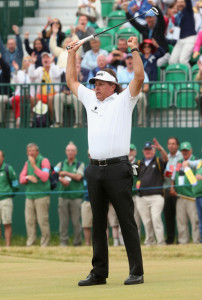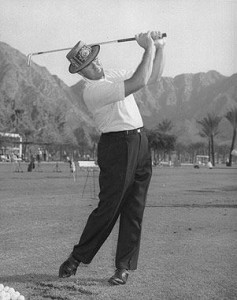Phil Mickelson Joins Elite Club With British Open Victory
With his come-from-behind victory at the British Open, Phil Mickelson joined an elite group as the 17th man in golf history to win three different major championships during his career.
Considering that earlier this year Mickelson finished second at the U.S. Open for a record sixth time, it is almost tempting to consider him the seventh person to win the career grand slam.
However, that accomplishment will have to wait until next year when the U.S. Open returns to Pinehurst, which was the site of the Open when Mickelson finished second for the first time in 1999.
Of those who won three different majors, the legend with whom Mickelson has the most in common in American Sam Snead.
Snead won seven major titles during his career, but was never able to win the U.S. Open. He finished second on four occasions during 31 attempts (there was no tournament between 1942-1945 when Snead was in his early 30s and was just reaching his prime).
After finishing second at the U.S. Open in his first appearance in the tournament in 1937, Snead finished in the top 10th again in 1939 and in the top 20 in 1940 and 1941. When the tournament returned following World War II, Snead finished tied for 19th in 1946, then second in 1947, fifth in 1948 and tied for second again in 1949.
In the 1950s, Snead finished in the top 12 at the U.S. Open eight times, including a fourth second place finish in 1953. Though he played in the tournament throughout most of the 1960s and 1970s (his final appearance was in 1977 at the age of 65), he cracked the top 10 only once more (in 1968 at the age of 56).
Mickelson has appeared in the U.S. Open 23 times. Though his overall result in his first appearance wasn’t as successful as that of Snead, he was the low amateur twice in 1990 and 1991.
He tied for fourth in 1995 and 10th in 1998 before his memorable battle with Payne Stewart during the 1999 Open. Since his first runner-up finish in 1999, he has finished second (or tied for second) five more times. What is most memorable about his multiple runner-up finishes is that he could have very easily won many ( if not all) of those championships.
Of those second place finishes, the most painful was probably in 2006 when Mickelson took a one stroke lead to the final hole, but double bogeyed the final hole to lose by a stroke to Geoff Ogilvy.
However, the most disappointing seemed to be the most recent one last month as Mickelson had many chances, but was unable to catch Justin Rose over the final several holes.
That he was able to rebound from that disappointment to contend at Muirfield is a credit to his veteran experience and ability to move past one disappointment and focus on the task at hand.
Now for Mickelson, like it was for Snead and every other golfer in history, his toughest opponent moving forward will be father time. Though Mickelson is playing as well as at any other time in his career, the fact that he will turn 44 during the 2014 season means that he only has a couple legitimate chances to join Bobby Jones, Ben Hogan, Jack Nicklaus, Gene Sarazen, Gary Player and Tiger Woods as winners of the career grand slam.











